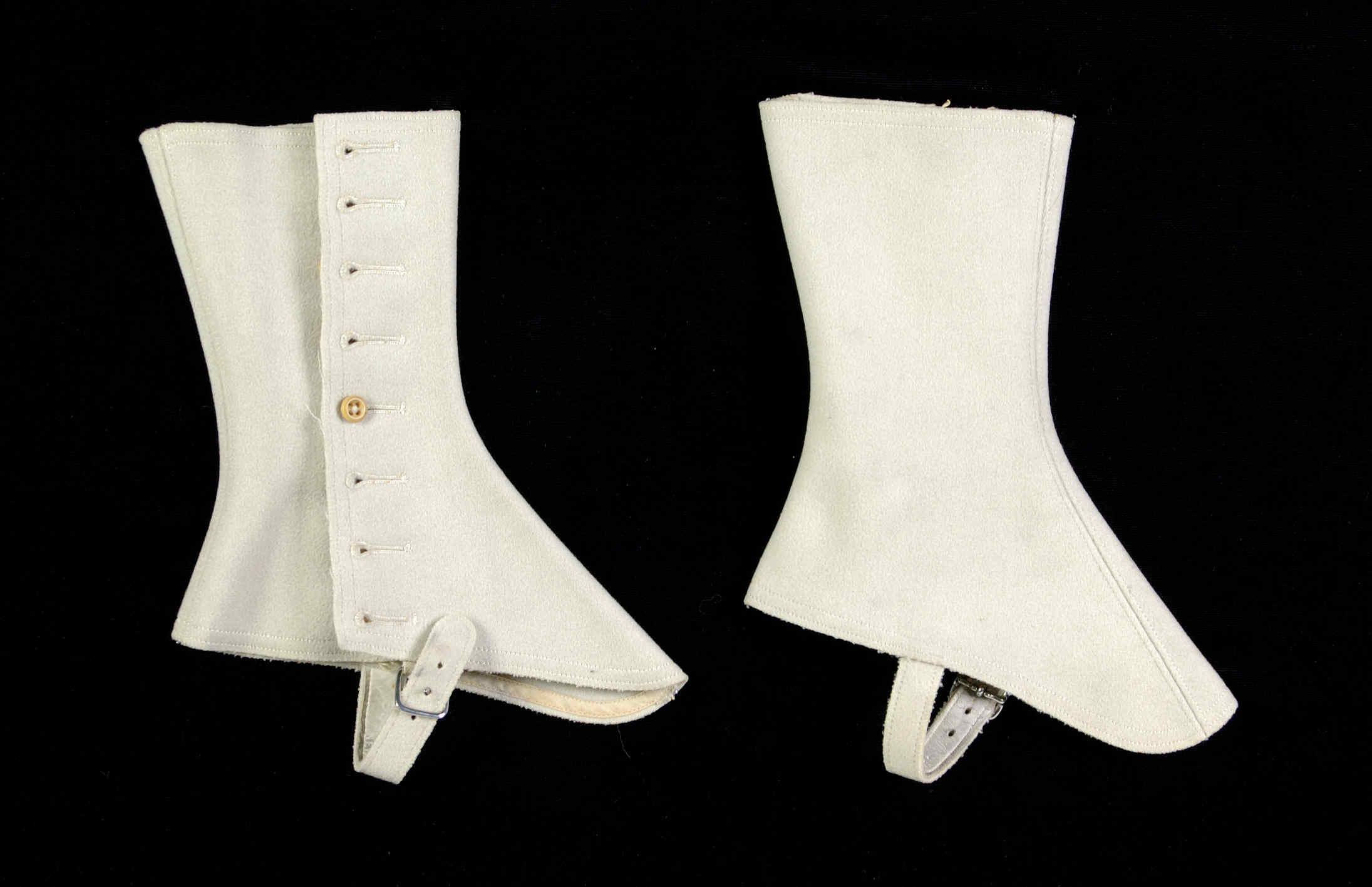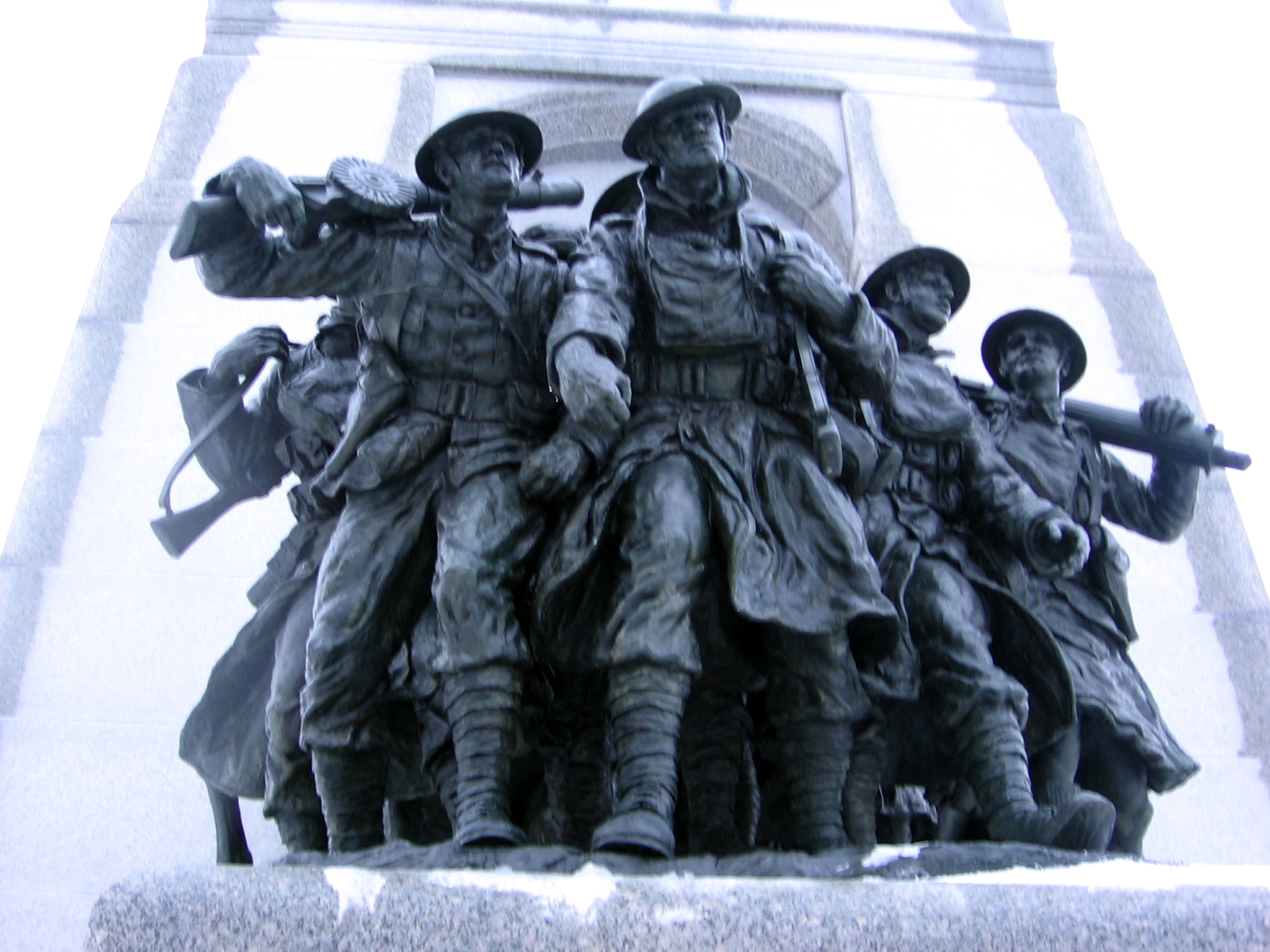|
Leg Warmers
Leg warmers are coverings for the lower legs, similar to long socks but thicker and generally footless. Leg warmers are worn to keep the lower legs warm in colder weather. They can be tubular sleeves, long fabric wrappings, or simple pieces of fur or fabric tied around the calves. They are used in several outdoor activities and sports including cycling, soccer, hockey, hiking, ice skating, and dance. They are used as dancewear by ballet and other classic dancers in order to keep the leg muscles warm and to prevent cramping or other muscle injuries. No scientific data has been yet collected to substantiate the claim that leg warmers prevent injury. Traditionally knitted from pure sheep wool, modern variants are more typically made of cotton, synthetic fibers, or both. Some are made of other materials, such as chenille. Leg warmers can vary in length, and in width, due to the material's stretchiness. They are commonly worn between the ankle to just below the knee, though many d ... [...More Info...] [...Related Items...] OR: [Wikipedia] [Google] [Baidu] |
Spats (footwear)
Spats, a shortening of spatterdashes, or spatter guards are a type of footwear Fashion accessory, accessory for outdoor wear, covering the instep and the ankle. Spats are distinct from gaiters, which are garments worn over the lower trouser leg as well as the shoe. Civilian dress Spats were worn by men and, less commonly, by women in the late 19th and early 20th centuries. They fell out of frequent use during the 1920s. Made of white cloth, grey or brown felt material, spats buttoned around the ankle. Their intended practical purpose was to protect shoes and socks from mud or rain, but they also served as a feature of stylish dress in accordance with the fashions of the period. Emily Post's 1931 ''Etiquette: The Blue Book of Social Usage'' stated, "Spats are optional. If chosen, they must match the gloves exactly." Increased informality may have been the primary reason for the decline in the wearing of spats. In 1913, friends scrambled to help Griffith Taylor find spats and ... [...More Info...] [...Related Items...] OR: [Wikipedia] [Google] [Baidu] |
Hosiery
Hosiery, (, ) also referred to as legwear, describes garments worn directly on the foot, feet and human leg, legs. The term originated as the collective term for products of which a maker or seller is termed a hosier; and those products are also known generically as hose. The term is also used for all types of knitted fabric, and its thickness and weight is defined by Units of textile measurement#Denier, denier or opacity. Lower denier measurements of 5 to 15 describe a hose which may be sheer in appearance, whereas styles of 40 and above are dense, with little to no light able to come through on 100 denier items. Etymology The word hosiery is a morphological derivation of the Anglo Saxon word ''hosa'', which meant a woven garment for the lower body and legs. Overview The first references to hosiery can be found in the works of Hesiod, where Romans are said to have used leather or cloth in forms of strips to cover their lower body parts. Even the Egyptians are speculated to ha ... [...More Info...] [...Related Items...] OR: [Wikipedia] [Google] [Baidu] |
Dancewear
Dancewear is clothing commonly worn by dancers. Items of dancewear include: * arm warmers * dance belts * dance shoes * legwarmers * leotards and unitards * pointe shoes * skirts * tights * tutus See also *Dance costume *Sportswear Sportswear or activewear is athletic clothing, including footwear, worn for sports activity or physical exercise. Sport-specific clothing is worn for most sports and physical exercise, for practical, comfort or safety reasons. Typical spor ... References {{Reflist Dancewear Dancewear ... [...More Info...] [...Related Items...] OR: [Wikipedia] [Google] [Baidu] |
Sportswear
Sportswear or activewear is athletic clothing, including footwear, worn for sports activity or physical exercise. Sport-specific clothing is worn for most sports and physical exercise, for practical, comfort or safety reasons. Typical sport-specific garments include tracksuits, shorts, football or basketball jerseys, t-shirts and polo shirts. Specialized garments include swimsuits (for swimming), wet suits (for diving or surfing), ski suits (for skiing) and leotards and tights (for gymnastics or aerobics). Sports footwear includes football boots (also referred to as cletes), trainers, riding boots, tennis shoes (or running shoes), or ice skates. Sportswear also includes sports bras for running, crop tops, or a bikini top. Sportswear is often worn as casual fashion clothing. For most sports the athletes wear a combination of different items of clothing, e.g. sport shoes, pants and shirts. In some sports, protective gear may need to be worn, such as helmets or Americ ... [...More Info...] [...Related Items...] OR: [Wikipedia] [Google] [Baidu] |
2010s Fashion
1 (one, unit, unity) is a number, Numeral (linguistics), numeral, and glyph. It is the first and smallest Positive number, positive integer of the infinite sequence of natural numbers. This fundamental property has led to its unique uses in other fields, ranging from science to sports, where it commonly denotes the first, leading, or top thing in a group. 1 is the unit (measurement), unit of counting or measurement, a determiner for singular nouns, and a gender-neutral pronoun. Historically, the representation of 1 evolved from ancient Sumerian and Babylonian symbols to the modern Arabic numeral. In mathematics, 1 is the multiplicative identity, meaning that any number multiplied by 1 equals the same number. 1 is by convention not considered a prime number. In Digital electronics, digital technology, 1 represents the "on" state in binary code, the foundation of computing. Philosophically, 1 symbolizes the ultimate reality or source of existence in various traditions. In math ... [...More Info...] [...Related Items...] OR: [Wikipedia] [Google] [Baidu] |
2000s Fashion
The fashions of the 2000s were often described as a global Mashup (culture), mash up, where trends saw the fusion of vintage clothing, vintage styles, global and ethnic clothing (e.g. boho-chic, boho), as well as the fashions of numerous music-based subcultures. Hip-hop fashion generally was the most popular among young people of both sexes, followed by the retro-inspired indie kid, indie look later in the decade. Men and women aged 25 and older adopted a dressy casual style which was popular throughout the decade. Globalization also influenced the decade's clothing trends, with the incorporation of Middle Eastern and Asian dress into mainstream European, American, and Australasian fashion. Furthermore, eco-friendly and ethical clothing, such as recycled fashions were prominent in the decade. In the early 2000s, many 1990s in fashion, mid and late 1990s fashions remained fashionable around the globe, while simultaneously introducing newer trends. The later years of the decade sa ... [...More Info...] [...Related Items...] OR: [Wikipedia] [Google] [Baidu] |
1980s Fashion
Fashion of the 1980s was characterized by a rejection of psychedelic colored, ornate fashions of the 1970s fashion, 1970s. Punk fashion began as a reaction against both the hippie movement of the past decades and the materialist values of the current decade. The first half of the decade was relatively tame in comparison to the second half, which was when apparel became very bright and vivid in appearance. One of the features of fashion in the second half of the 1980s was the interest in alternative forms. In the 1980s, Alternative fashion, alternative trends became widespread. This phenomenon has been associated with such phenomena as street style, Punk rock, punk and post-punk. During the 1980s, Shoulder pad (fashion), shoulder pads, which also inspired "power dressing," became common among the growing number of career-driven women. Hair in the 1980s was typically big, curly hair, curly, bouffant and heavily styled. Television shows such as ''Dynasty (1981 TV series), Dynasty'' ... [...More Info...] [...Related Items...] OR: [Wikipedia] [Google] [Baidu] |
Loose Socks
Slouch socks, slouchy socks, loose socks or fall down socks are a type of sock featuring a heavy non-elastic upper that may be pushed down into heavy folds around the ankles or pulled up to the knee. In Japan, the loose sock style has been popular with high-school girls. In the US, slouch socks have trended in and out of fashion since the 1980s. Description Slouch socks are a type of sock featuring a heavy non-elastic upper that may be pushed down into heavy folds around the ankles or pulled up to the knee. Slouch socks tend to have a foot that is made of very thin fabric to encourage the layering of the socks. Slouch socks come in two primary varieties. " Flat-knit" slouch socks have no elastic and have a "two-by-two" knitting pattern. The "flat-knit" term comes from the fact that the ribbing of the socks has a squared-off appearance. " Rib-knit" slouch socks are so-named because of their rounded ribbing. History Japan are a style of baggy sock worn by Japanese high s ... [...More Info...] [...Related Items...] OR: [Wikipedia] [Google] [Baidu] |
Puttee
file:Puttees from American Infantry Chauchat.jpg, Close-up of a World War I era United States Army infantryman's puttees A puttee (also spelled ''puttie'', adapted from the Hindi language, Hindi ''wikt:पट्टी, paṭṭī'', meaning "bandage") is a covering for the lower part of the leg from the ankle to the knee, also known as: ''legwraps'', ''leg bindings'', ''winingas'' and ''Wickelbänder'' etc. They consist of a long narrow piece of cloth wound tightly, and spirally round the leg, and serving to provide both support (as a compression garment) and protection. They were worn by both mounted and dismounted soldiers, generally taking the place of the leather or cloth gaiter. History Worn since antiquity, the puttee was adopted as part of the service uniform of foot and mounted soldiers serving in British India during the second half of the nineteenth century. In its original form the puttee comprised long strips of cloth worn as a tribal legging in the Himalayas. The ... [...More Info...] [...Related Items...] OR: [Wikipedia] [Google] [Baidu] |
Leggings
Leggings are several types of leg attire that have varied through the years. Modern usage from the 1960s onwards has come to refer to elastic close-fitting High-rise (fashion), high-rise garments worn over the legs typically by women, such as leg warmers or tights. Usage from the 18th century refers to men's wear usually made of cloth or leather that is wrapped around the leg down to the ankle. In the 19th century, leggings usually referred to infants' leg clothing that were matched with a jacket, as well as leg-wrappings made of leather or wool and worn by soldiers and Trapping, trappers. Leggings prominently returned to women's fashion in the 1960s, drawing from the form-fitting clothing of dancers. With the widespread adoption of the synthetic fibre Lycra and the rise in popularity of aerobics, leggings came to further prominence in the 1970s and 1980s, and eventually made their way into streetwear. Leggings are a part of the late 2010s into the 2020s athleisure fashion trend of ... [...More Info...] [...Related Items...] OR: [Wikipedia] [Google] [Baidu] |
Gaiters
Gaiters are garments worn over the shoe and bottom of the pant or trouser leg and used primarily as personal protective equipment, in particular against snakebite. They are also commonly used to keep the bottom of the pant-leg dry when hiking in snow. Similar garments used primarily for display are spats. Originally, gaiters were made of leather or canvas. Today, those for walking are commonly made of plasticized synthetic cloth such as nylon or polyester. Gaiters for use on horseback continue to be made of leather. They are made to cover the gap between the pants and boots, rising to just below the knee, and usually have drawcords for tightening. Wearing gaiters, while preventing most snake bites, does not provide complete protection. Common materials for leg gaiters on the market are canvas, nylon, Cordura, Kevlar, and leather. Nylon is better at preventing snakebite than polyester, canvas, or Cordura. Military origins and terminology Beginning in 1700, most infantry i ... [...More Info...] [...Related Items...] OR: [Wikipedia] [Google] [Baidu] |








